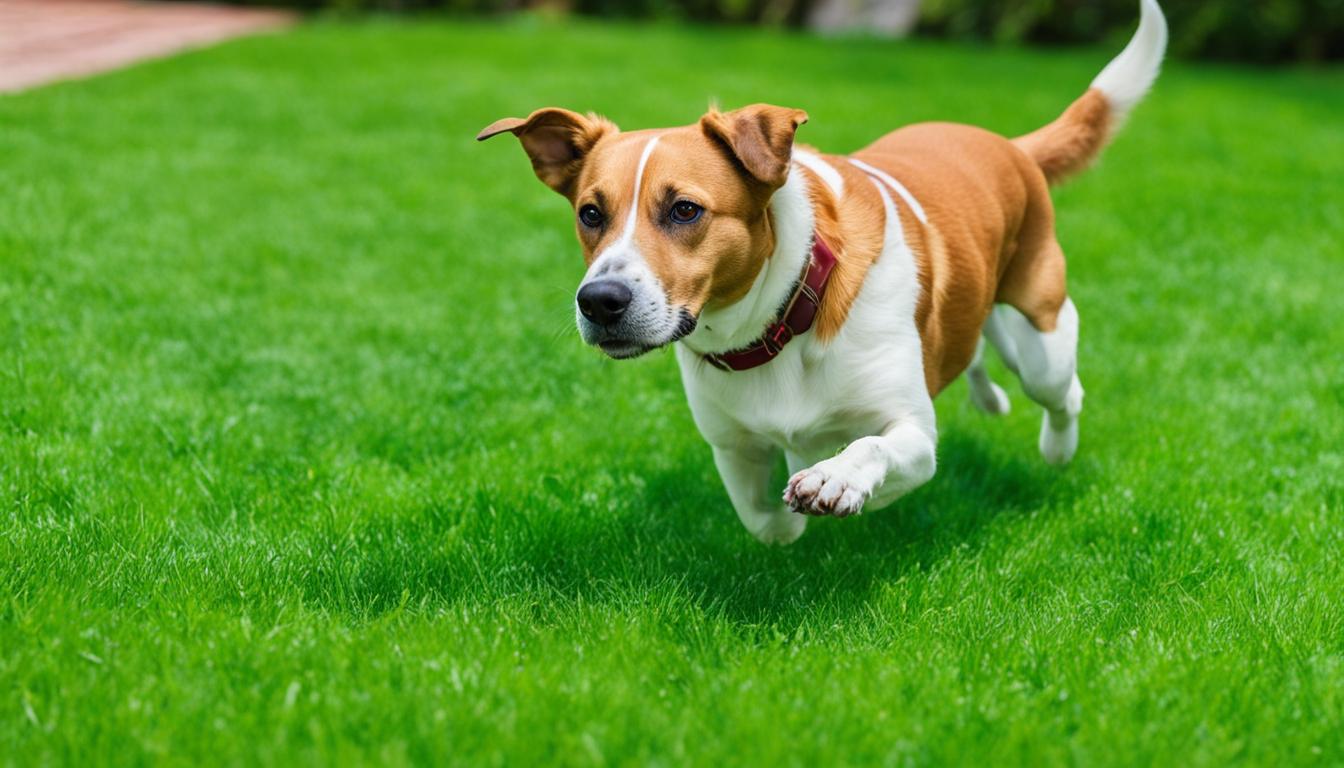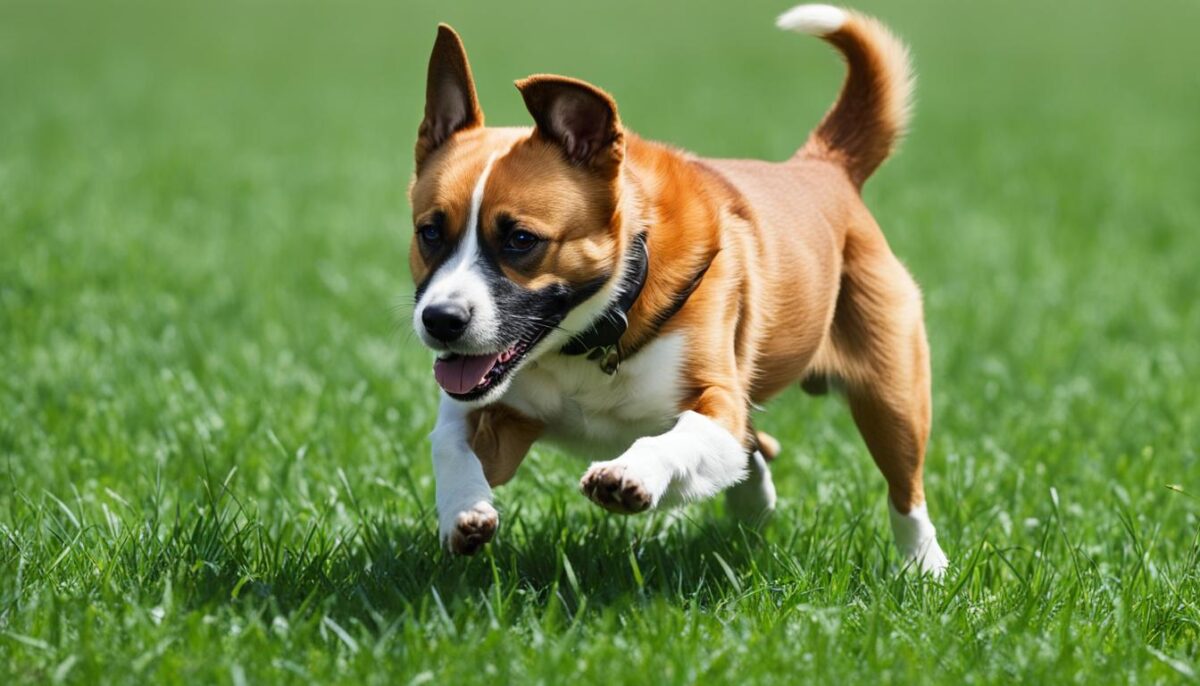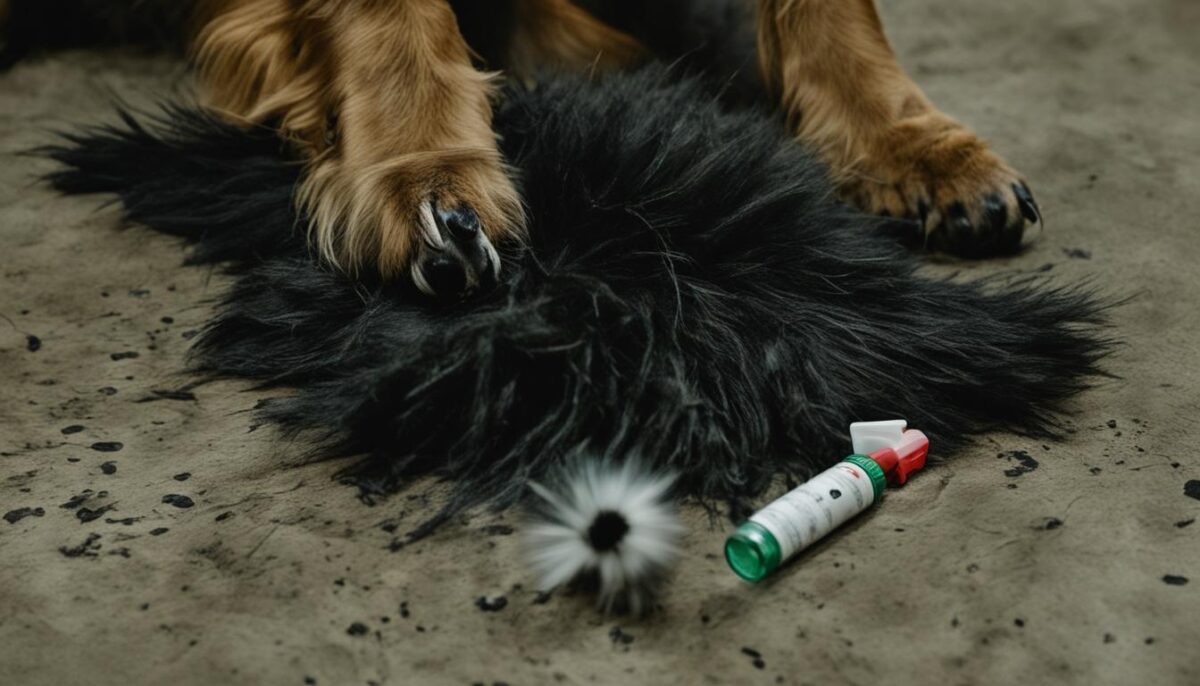Have you ever watched your furry friend play in the yard and wondered if they could pick up fleas from the grass? The answer is yes, they sure can. Think about those little insects, fleas, as unwanted hitchhikers waiting in your backyard to hop on for a ride. When dogs scratch a lot after spending time outside, it could mean these outdoor flea hazards have made their way onto your pet. And if not stopped, they can bring the flea life cycle right into your home.
Now you might think, grass is just grass, right? But prepare to be surprised. Our backyards are full of life, including tiny creatures like fleas that are looking for their next host. And unfortunately, that host could be your beloved dog. These fleas in backyards are not just causing dogs itching; they can lead to even more trouble if not taken care of.
Key Takeaways
- Fleas can jump from grass onto your dog while they play outside.
- These pests cause itching and can lead to more serious issues for pets.
- Understanding the flea life cycle is key to preventing flea infestations.
- Dogs can carry fleas into your home from their adventures in the backyard.
- Regular checks and treatments are important for keeping your dog flea-free.
Understanding the Enemy: The Flea Life Cycle
If you want to keep your furry friend free from itchy bites, it’s important you know about fleas lifecycle. These tiny enemies are not just pests; they are parasites that can hop onto your pet and make them super uncomfortable. Fleas are a lot smaller than a piece of rice and can cause big problems like flea infestations in your home.
What Are Fleas?
Fleas are like tiny vampires that love to suck blood. But instead of turning into bats, they lay lots of flea eggs. These eggs turn into what we call developing fleas. The fleas you see jumping around and biting are the grown-ups, but remember, there are usually lots more you can’t see!
How Temperature Affects Flea Development
In warm places, fleas are having a party all year round, but when it gets cold, they slow down and aren’t as active. Just because you don’t see them doesn’t mean they aren’t there. They’re waiting for the warm weather to start growing again.
| Flea Stage | Where It Lives | What It Does |
|---|---|---|
| Flea Egg | Carpet, pet beds, grass | Sits around until it hatches into a larva |
| Larva | Hidden in dark places | Eats stuff like dead skin to get bigger |
| Pupa | Inside a cocoon | Changes into an adult flea |
| Adult Flea | On pets, in your house | Bites and makes new eggs |
Now that you know a bit about fleas and how they grow, you can help stop them from bugging your pet and your family. That’s right, you’re on your way to being a flea-fighting superhero!
Can Dogs Get Fleas From Grass?
Have you ever watched your furry friend playing in the yard and wondered if they’re safe from pesky fleas? Well, fleas from the yard can indeed hop onto your dog during their outdoor play. These little insects are not just found inside our homes; they thrive in outdoor environments, making backyard flea risk something to consider seriously.
When thinking about protecting your dog from these unwanted guests, you should know that outdoor play flea transmission is a real concern. So, how do these fleas make it into your yard? Animals like raccoons and mice can visit your yard and leave behind flea eggs. Then, these eggs hatch and wait for a warm body, like your dog’s, to come by. Just like that, a few fleas from a passing critter can become a major nuisance in your home.
Outdoor play is essential for a dog’s health, but it’s also a prime time for flea transmission. Understanding the risks can help you protect your pup and your home from these tiny invaders.
To help you understand the outdoor play flea transmission risk, here’s a simple table that shows what can happen in your yard:
| Source | Risk Factor | Prevention Tips |
|---|---|---|
| Wildlife like raccoons | High | Secure garbage cans to discourage wildlife. |
| Neighbor’s pets | Medium | Communicate with neighbors about flea control. |
| Stray animals | High | Keep your yard fenced and check for gaps regularly. |
While we love seeing our dogs have a blast outside, keep in mind the backyard flea risk. With some simple steps and diligent care, you can make sure your dog’s playtime is both fun and flea-free!
Common Ways Dogs Come into Contact with Fleas
As a loving pet owner, it’s important for you to know that flea contamination can happen anywhere. Pet interactions with other animals, both in and out of the house, are a common source.
Contact with Other Animals
Your furry friend might love playing with other dogs at the park, but this fun time can lead to unwanted guests. Fleas can transfer from another pet to yours simply by touching or playing together.
Encounters with Wildlife
Wildlife flea transmission is a real thing. Your backyard could be a hot spot for wildlife like squirrels or raccoons. These animals can leave behind fleas that might jump onto your dog.
Visiting New Environments
When you take your dog for a walk or explore a new hiking trail, the grass and bushy areas could house fleas which may hop onto your unsuspecting pet.
Other Household Pets as Flea Carriers
Not just your dogs, but other pets at home like cats or rabbits, can bring fleas into your living space. Pet flea transfer can happen easily if any of your pets are not treated for fleas.
| Interaction | Risk of Flea Transfer |
|---|---|
| Playing with infected pets | High |
| Wildlife in your yard | Medium to High |
| Exploring new terrains | Medium |
| Contact with other household pets | High if pets are untreated |
Remember, it’s easy for fleas to sneak into your life. But your awareness and timely action can keep your precious pets safe and happy.
Protecting Your Pet: Flea Prevention and Treatment
Keeping your furry friends safe from pesky parasites is key to ensuring their happiness and health. A vital part of pet care is flea prevention and having effective flea treatment options at the ready. With the right steps, you can help maintain a flea-free home for the comfort of your pets and family.
Checking Your Dog for Signs of Fleas
It’s important to frequently check your dog for fleas. Watch for signs like scratching, red or irritated skin, or even tiny black specks which might be flea dirt. By being vigilant, you can catch a flea problem before it gets out of hand.
Choosing the Right Flea Treatment
When considering flea treatment options, always think about what’s best for your dog’s health. There are many products on the market, including topical solutions, flea collars, and oral medications. Talk to your vet to pick the safest and most effective one for your pet’s needs.
The Importance of Treating All Household Pets
For total flea prevention, it’s critical to treat all the pets in your home. Fleas can jump from animal to animal, so leaving even one pet untreated can cause an infestation to continue. Remember, if one pet has fleas, it’s a concern for all.
Cleaning Your Environment to Combat Fleas
Maintaining a clean home is essential in the battle against fleas. Regular vacuuming, especially in places where your pet sleeps or spends a lot of time, can help remove flea eggs and larvae. Washing your pet’s bedding weekly in hot water can also prevent fleas from making a comeback.
Conclusion
Keeping our furry friends and our homes safe from fleas is a big job, but it’s totally doable with the right know-how. By getting a grip on how fleas live and grow, and recognizing that even your backyard can be a hangout for these pesky bugs, you can start fighting back. Remember, effective flea control isn’t a one-time thing—it’s about sticking to a plan that keeps those fleas away for the long haul.
Everyone at home plays a part in long-term flea prevention. It means treating all your pets, not just the dog that loves to roll around in the grass. And it’s also your job to keep your place clean so fleas don’t get comfy. Think about how much better you’ll all feel, your pets included, when you’re living in a place without itchy, scratchy fleas. That’s what we call homeowner pet safety.
So, grab your flea treatments, roll up your sleeves, and get ready for some serious cleaning. It’s all about making sure your pets and your family are living their happiest, healthiest lives together, flea-free! And, if you follow these steps, you’re on your way there. Let’s keep our paws and homes clean!
FAQ
Can dogs really get fleas from grass?
Yes, your dog can indeed get fleas from the grass. These parasites can be brought into your yard by other animals and can leap onto your pet, causing itching and discomfort.
What are fleas and how do they develop?
Fleas are tiny blood-sucking parasites smaller than a grain of rice. Their life cycle includes four stages: egg, larva, pupa, and adult. They can live year-round indoors and are most active in warm temperatures.
Does the temperature affect flea development?
Absolutely, temperature has a significant effect on flea development. While fleas can survive indoors throughout the year, they are particularly active and develop faster in warm months, becoming less active when it’s colder.
What common ways do dogs come into contact with fleas?
Dogs can come into contact with fleas through interactions with other animals, encounters with wildlife, visits to new environments, or other untreated household pets that may be carriers of fleas.
How can I check my dog for signs of fleas?
Regularly inspect your dog’s coat, particularly after they’ve been outdoors. Look out for flea dirt (small black specks), tiny white eggs, or the fleas themselves. Pay extra attention if your dog is scratching more than usual.
What are some effective flea treatment options for dogs?
There are various flea treatment options, including topical solutions, oral medications, collars, and sprays. Consult with your veterinarian to choose the most appropriate and effective treatment for your pet.
Why is it important to treat all household pets for fleas?
Treating all your household pets is crucial because even if only one pet is untreated, it can serve as a host for fleas and reintroduce them to your home and other pets, perpetuating the infestation.
What steps should I take to clean my environment and combat fleas?
To fight fleas, vacuum your home frequently, wash all pet bedding in hot water, and use flea control products in your environment. Thorough cleaning can greatly reduce the number of fleas and prevent future infestations.


